- Contrary to the past time there are many ways to obtain information.
- Most contemporary sources of information are electronic.
- Two points of view exist:
- Total conversion to electronic sources is costly.*
- Electronic sources have the potential to totally replace printed information.
Despite the perception of the popularity of e-books, at the present time the percentage of electronic books bought is merely 6 percent for the total sale of books (Yarow).
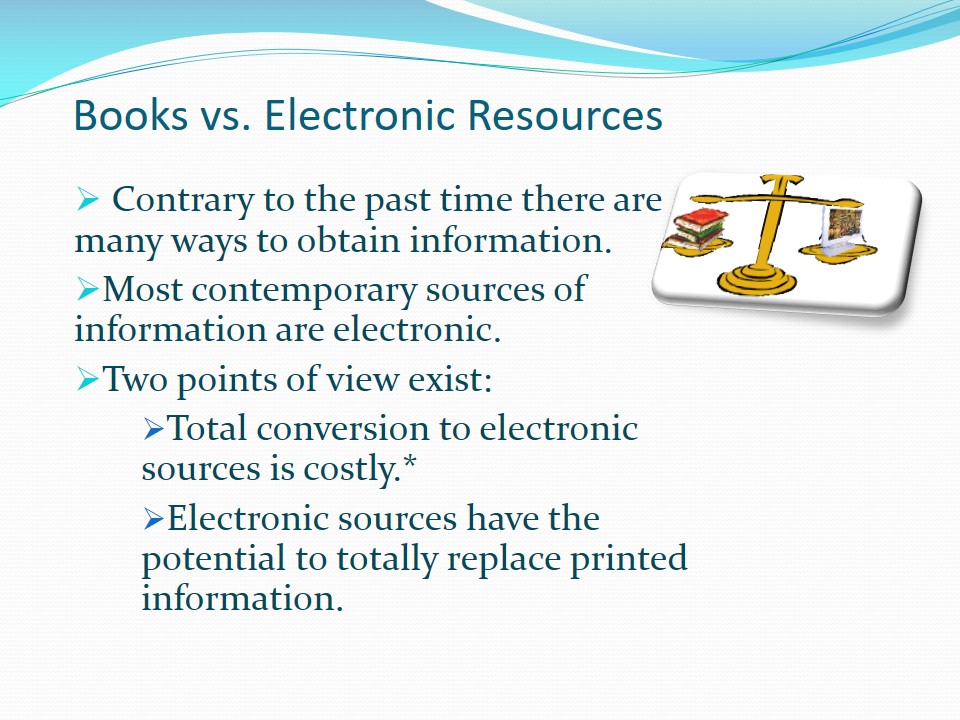
Electronic Resources
- There are many types of electronic resource.
- All electronic resources exist in digital form.
- Electronic resources ca n be classified into:
- Electronic publications, e-books, e-articles, etc. Can be accessed either through computers or special reading devices.
- Multimedia resources, i.e. visual and/or audio content.
- Additionally electronic resources might refer to any non-printed materials used in learning, either for academic research or learning.
Electronic resources in a study context refer to the usage of article database, which access is provided on campus, and electronic textbooks, which students purchase during the course of the semester.
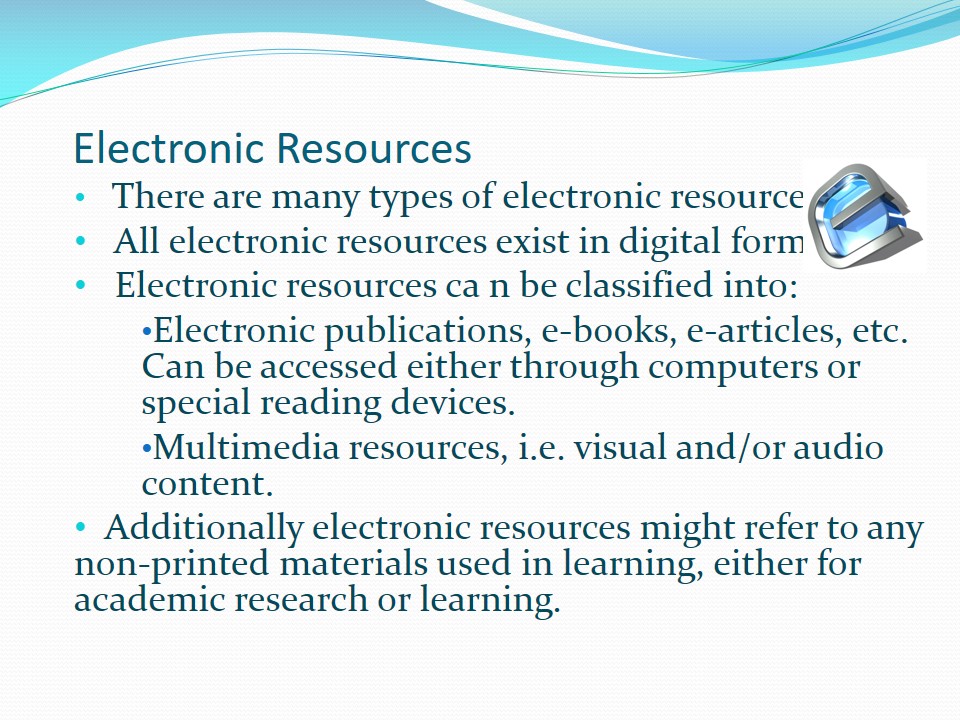
Advantages of Electronic Resources
- Costs – Electronic versions of books are cheaper than their printed equivalents.*
- Space – Electronic sources can be stored and transferred effortlessly, unlike printed materials.**
- Environment –the reliance on electronic sources contributes to the protection of the environment.
- Papers and trees consumption.
- Energy consumption.
- Elimination of packaging
* CourseSmart, a provider of electronic textbooks, cites savings up to $2,625 can be saved over the course of 3 years (CourseSmart).
** A memory card with the capacity of 1 gigabyte with a size of less than a post size can hold up to 640 average sized electronic books.

Electronic Resources in Learning
- Electronic resources are frequently used in academic research.
- Convenience in usage.
- Faster access.
- Higher variability.*
- Electronic resources are easy to use during study.
- Search through the text.
- Faster browsing through text.
- Making notes
- Mobility.
* Researches found that electronic resources became integral part of academic research (Madhusudhan), with electronic articles being the most frequently used.
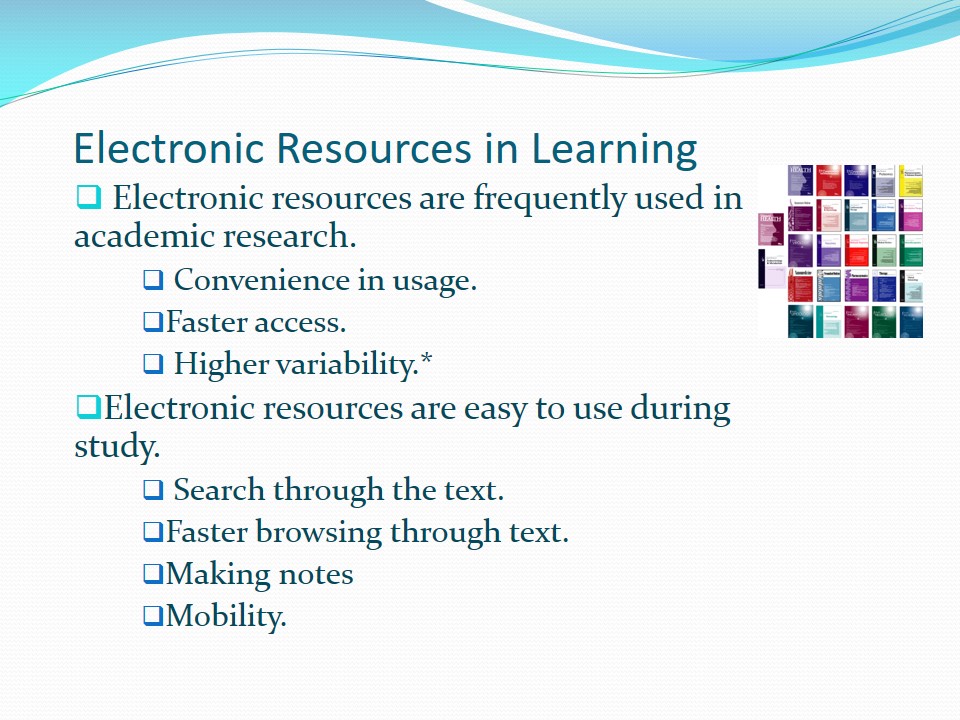
The Potential of Electronic Resources
- New technologies such as the iPad erase the differences between various types of electronic resources.
- Adding interactivity and new touch interfaces indicate the potential of new technologies.*
Several applications are available for the iPad and which are used in educational needs for children. There are more than 81 percent of interactive book titles for children available (Friess).
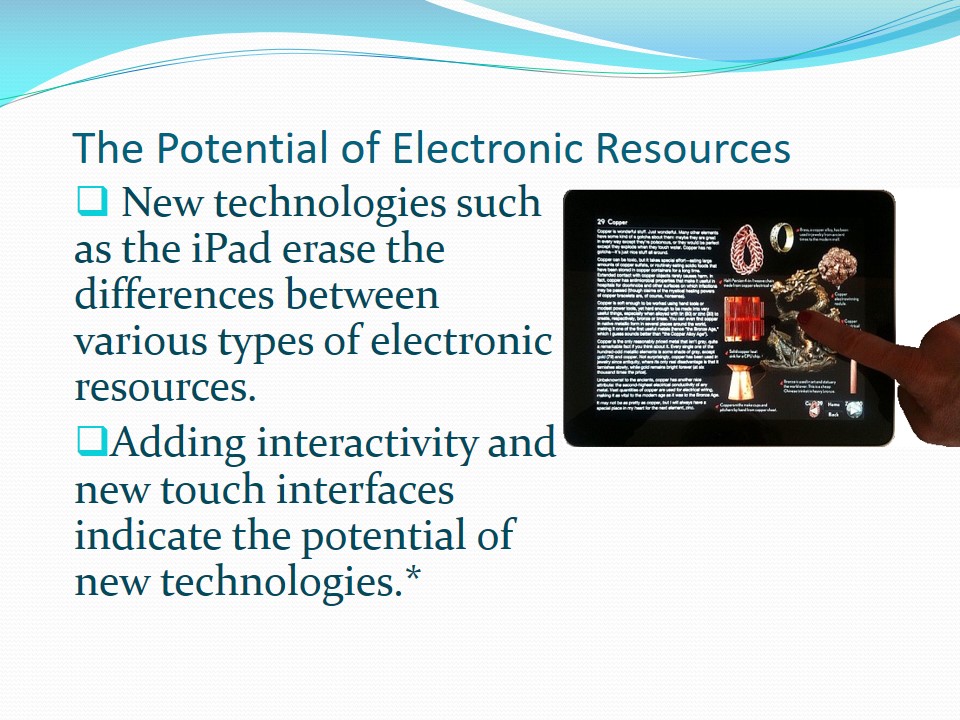
Drawbacks
- Failures in implementing electronic readers in education.
- Using Devices such as Amazon proved to be inconvenient in learning.
- Visual and audio materials are usually used in conjunction with printed textbooks.
- The cost of changing the infrastructure of educational institutions.
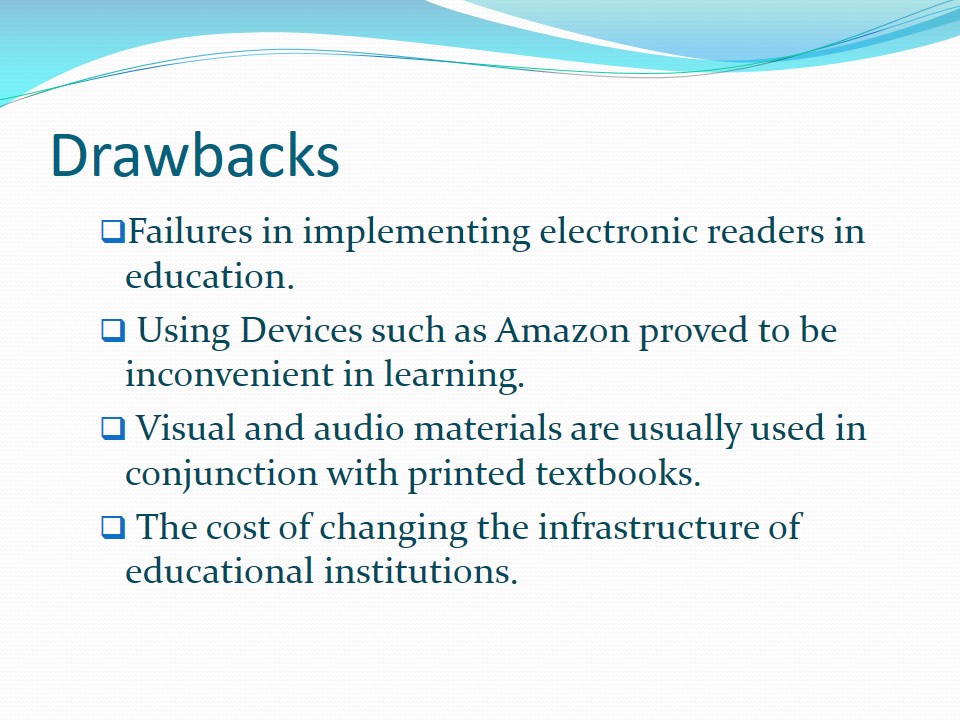
Short-Term Problems
- Kindle is intended for a reading experience.
- Better solutions will be found in the future.
- The solution should be intended to be used in educational setting.
- Providing access to electronic articles proved to be successful.
- The direction is already set for new developments.
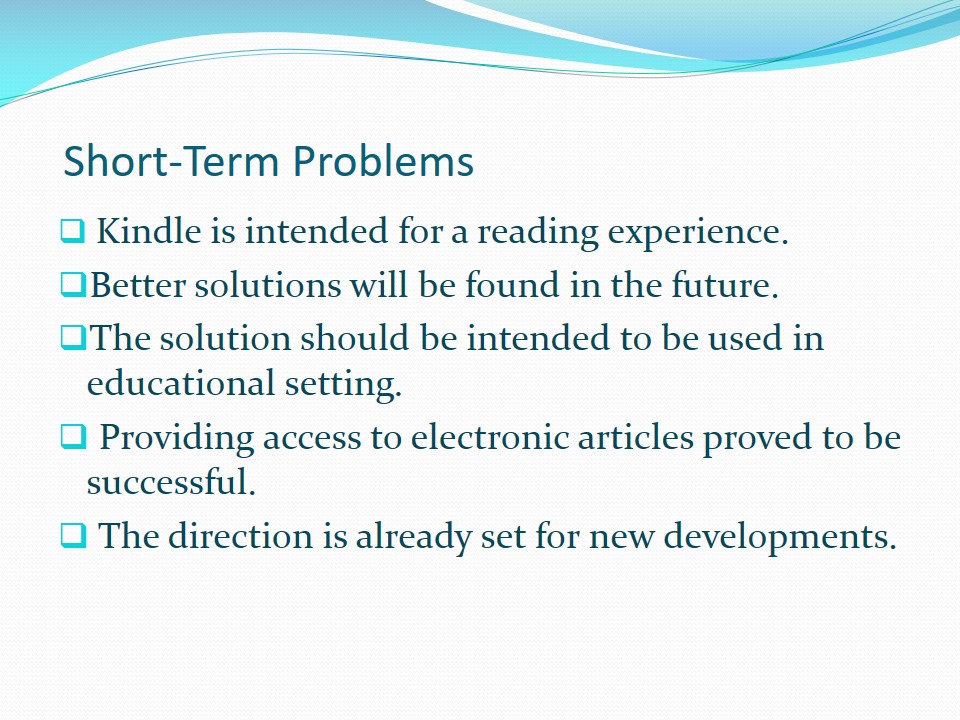
Conclusion
- Sources electronic sources can coexist.
- There is no current threat of totally replacing printed materials.
- Electronic sources have many advantages over printed sources.
- Electronic sources in learning have an matched potential for the future.
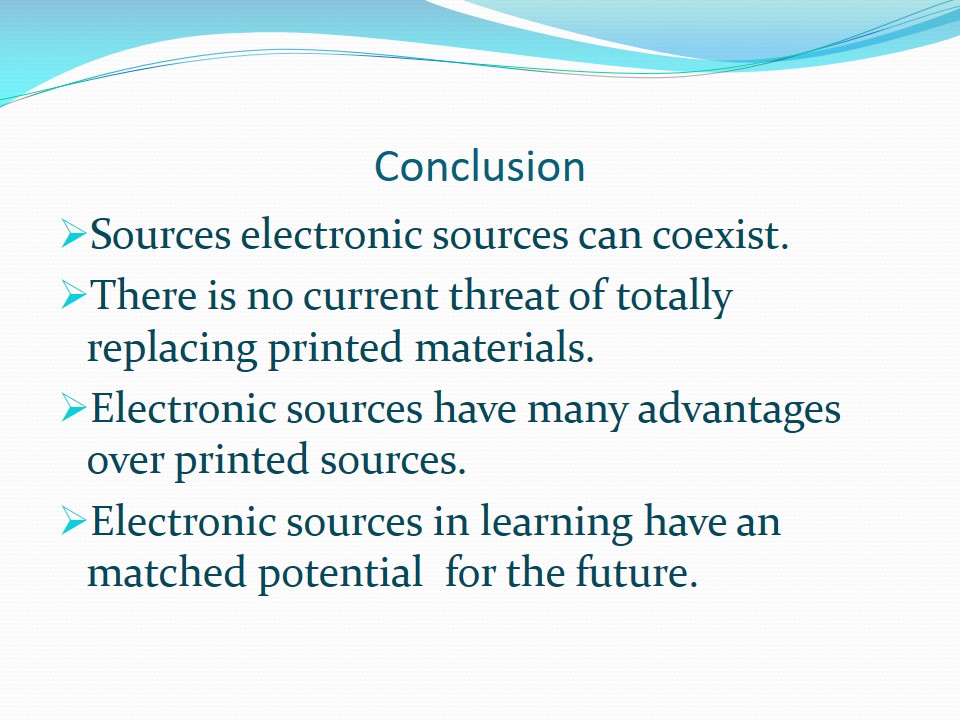
References
CourseSmart. “About Coursesmart”. 2010. CourseSmart, LLC. Web.
Friess, Steve. “For Ipad, 81 Percent of Top Book Apps Are Kids Titles”. 2010. Aol News. Web.
Madhusudhan, Margam. “Use of Electronic Resources by Research Scholars of Kurukshetra University.” The Electronic Library 28.4: 492-506 pp. Emerald Insight. Web.
Yarow, Jay. “How Many Kindle Books Has Amazon Sold? About 22 Million This Year”. 2010. Business Insider. Web.